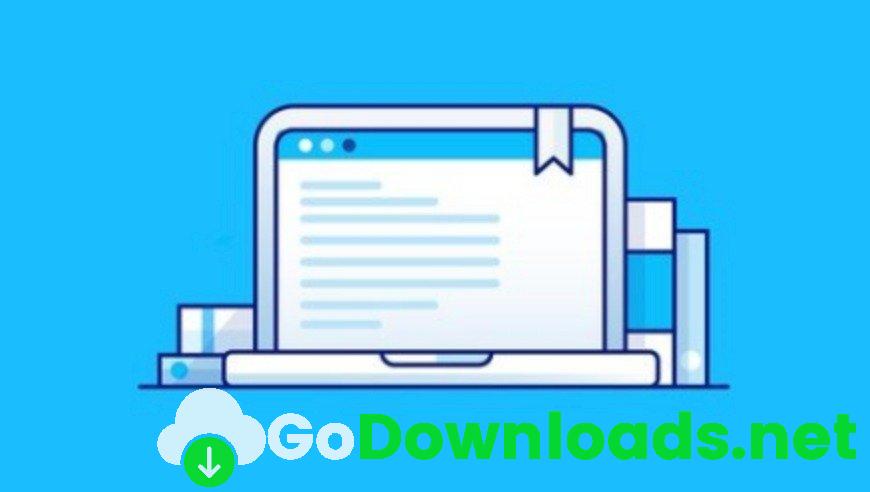Cool
Learning Path Python Guide To Become A Python Professional Free Download

Last updated 7/2017MP4 | Video: h264, 1280×720 | Audio: AAC, 44.1 KHzLanguage: English | Size: 2.10 GB | Duration: 19h 44m
A journey from being a novice to a professional Python developer
What you’ll learn
See the intricate details of the Python syntax and how to use it to your advantage
Learn to manipulate data effectively using built-in data structures
Get acquainted with advanced programming techniques in Python
Equip yourself with functional and statistical programming features
Take advantage of Python’s metaprogramming and programmable syntax features
Understand how to handle high I/O loads with asynchronous I/O to get a smoother performance
Get familiar with Python’s metaprogramming and programmable syntax features
Learn the concepts of reactive programming and RxPy
Requirements
Basic programming knowledge is needed.
Description
If you are looking for a complete course on Python programming, then go for this Learning Path. Python is the preferred choice of developers, eeers, data scientists, and hobbyists everywhere. It is a great scripting language that can power your applications and provide speed, safety, and scalability.
We will b this learning journey by understanding the basic concepts of Python such as statements and syntax along with using numbers, strings, and tuples. We will then explore various function definition techniques along with learning the basics of classes and objects.
Going ahead, we will understand the intermediate concepts such as functional and reactive programming in Python. We will also explore statistical programming and regression.
Next, you will uncover the advanced topics in Python, will learn to implement real-world test cases to your programs along with integrating different applications.
By the end of this Video Learning Path, you will become proficient in Python.
About the Authors
Steven F. Lott has been programming since the 70s, when computers were large, expensive, and rare. As a contract software developer and architect, he has worked on hundreds of projects, from very small to very large. He’s been using Python to solve business problems for over 10 years. He’s currently leveraging Python to implement microservices and ETL pipelines. His other titles with Packt Publishing include Python Essentials, Mastering Object-Oriented Python, Functional Python Programming, and Python for Secret Agents. Steven is currently a technomad who lives in various places on the east coast of the U.S.
Daniel Arbuckle gained his PhD in Computer Science from the University of Southern California. He has published numerous papers along with several books and video courses, and he is both a teacher of computer science and a professional programmer.
Overview
Section 1: Modern Python Solutions Part 1
Lecture 1 The Course Overview
Lecture 2 Creating Meaningful Names and Using Variables
Lecture 3 Working with Large and Small Integers
Lecture 4 Choosing between Float, Decimal, and Fraction
Lecture 5 Choosing between True Division and Floor Division
Lecture 6 Rewriting an Immutable String
Lecture 7 String Parsing with Regular Expressions
Lecture 8 Building Complex Strings with “template”.format
Lecture 9 Building Complex Strings from Lists of Characters
Lecture 10 Using the Unicode Characters that aren’t on Our Keyboards
Lecture 11 Encoding Strings-Creating ASCII and UTF8 Bytes
Lecture 12 Decoding Bytes, How to Get Proper Characters from Some Bytes
Lecture 13 Using Tuples of Items
Lecture 14 Writing Python Script and Module Files
Lecture 15 Writing Long Lines of Code
Lecture 16 Including Descriptions and Documentation
Lecture 17 Writing Better RST Markup in docstring
Lecture 18 Designing Complex if…elif Chains
Lecture 19 Designing a While Statement that Teates Properly
Lecture 20 Avoiding a Potential Problem with Break Statements
Lecture 21 Leveraging the Exception Matching Rules
Lecture 22 Avoiding a Potential Problem With an Except:Clause
Lecture 23 Chaining Exceptions with the Raise from Statement
Lecture 24 Managing a Context Using the With Statement
Lecture 25 Designing Functions with Optional Parameters
Lecture 26 Using Super Flexible Keyword Parameter
Lecture 27 Forcing Keyword-only Argument with the * Separator
Lecture 28 Writing Explicit Types on Function Parameters
Lecture 29 Picking an Order for Parameters Based on Partial Functions
Lecture 30 Writing Clear Documentation Strings
Lecture 31 Designing Recursive Functions Around Python’s Stack Limit
Lecture 32 Writing Reusable Script with the Script Library Switch
Lecture 33 Choosing a Data Structure
Lecture 34 Building Lists – Literals, Appending, and Comprehensions
Lecture 35 Slicing And Dicing a List
Lecture 36 Deleting From a List
Lecture 37 Reversing a Copy of a List
Lecture 38 Using Set Methods and Operators
Lecture 39 Removing Items from a Set
Lecture 40 Creating Dictionaries
Lecture 41 Removing from Dictionaries
Lecture 42 Controlling the Order of the Dict Keys
Lecture 43 Handling Dictionaries and Sets in doctest Examples
Lecture 44 Understanding Variables, References, and Assignment
Lecture 45 Making Shallow and Deep Copies of Objects
Lecture 46 Avoiding Mutable Default Values for Function Parameters
Lecture 47 Using Features of the print Functions
Lecture 48 Using input and getpass for User Input
Lecture 49 Debugging with “Format”.Format_Map(Vars)
Lecture 50 Using Argparse to Get Command-line Input
Lecture 51 Using CMD for Creating Command-line Applications
Lecture 52 Using the OS Environment Settings
Section 2: Modern Python Solutions – Part 2
Lecture 53 The Course Overview
Lecture 54 Using a Class to Encapsulate Data and Processing
Lecture 55 Designing Classes with Lotsof Processing
Lecture 56 Designing Classes with Little Unique Processing
Lecture 57 Optimizing Small Objects with _slots_
Lecture 58 Using More Sophisticated Collections
Lecture 59 Extending a Collection
Lecture 60 Using Properties for Lazy Attributes
Lecture 61 Using Settable Properties to Update Eager Attributes
Lecture 62 Choosing Between Inheritance and Extension
Lecture 63 Separating Concerns via Multiple Inheritance
Lecture 64 Leveraging Python’s Duck Typing
Lecture 65 Managing Global and Singleton Objects
Lecture 66 Using more Complex Structures
Lecture 67 Creating a Class that Has Orderable Object
Lecture 68 Defining an Ordered Collection
Lecture 69 Deleting from a List of Mappings
Lecture 70 Writing Generator Functions with the Yield Statement
Lecture 71 Using Stacked Generator Expression
Lecture 72 Applying Transformations to a Collection
Lecture 73 Picking a Subset
Lecture 74 Summarizing a Collection
Lecture 75 Combining Map and Reduce Transformations
Lecture 76 Implementing “There Exists” Processing
Lecture 77 Creating a Partial Function
Lecture 78 Simplifying Complex Algorithms with Immutable Data Structures
Lecture 79 Writing Recursive Generator Functions with the Yield from Statement
Lecture 80 Using pathlib to Work with Filenames
Lecture 81 Reading and Writing Files with Context Managers
Lecture 82 Replacing a File While Preserving the Previous Version
Lecture 83 Reading Delimited Files with the CSV Module
Lecture 84 Reading Complex Formats Using Regular Expressions
Lecture 85 Reading JSON Documents
Lecture 86 Reading XML Documents
Lecture 87 Reading HTML Documents
Lecture 88 Upgrading CSV from DictReader to the namedtuple Reader
Lecture 89 Upgrading CSV from a DictReader to a Namespace Reader
Lecture 90 Using Multiple Contexts for Reading and Writing Files
Lecture 91 Using the Built-in Statistic Library
Lecture 92 Average of Values in a Counter
Lecture 93 Computing the Coefficient of a Correlation
Lecture 94 Computing Regression Parameters
Lecture 95 Computing an Autocorrelation
Lecture 96 Config that the Data is Random – the Null Hypothesis
Lecture 97 Locating Outliers
Lecture 98 Analyzing Many Variables in One Pass
Section 3: Modern Python Solutions – Part 3
Lecture 99 The Course Overview
Lecture 100 Using docstring for Testing
Lecture 101 Testing Functions that Raise Exceptions
Lecture 102 Handling Common doctest Issues
Lecture 103 Creating Separate Test Modules and Packages
Lecture 104 Combining the unittest and doctest Tests
Lecture 105 Testing Things that Involve Dates and
Lecture 106 Testing Things That Involve Randomness
Lecture 107 Mocking External Resources
Lecture 108 Implementing Web Services with WSGI
Lecture 109 Using the Flask Framework for RESTful APIs
Lecture 110 Parsing the Query String in a Request
Lecture 111 Making REST Requests Using urllib
Lecture 112 Parsing the URL Path
Lecture 113 Parsing a JSON Request
Lecture 114 Implementing Authentications for Web Services
Lecture 115 Finding Configuration Files
Lecture 116 Using YAML for Configuration Files
Lecture 117 Using Python for Configuration Files
Lecture 118 Using Logging for Control and Audit Output
Lecture 119 Combining Two Applications into One
Lecture 120 Combining Many Applications Using the Command Design Pattern
Lecture 121 Controlling Complex Sequences of Steps
Section 4: Mastering Python – Second Edition
Lecture 122 The Course Overview
Lecture 123 Python Basic Syntax and Block Structure
Lecture 124 Built-in Data Structures and Comprehensions
Lecture 125 First-Class Functions and Classes
Lecture 126 Extensive Standard Library
Lecture 127 New in Python 3.5
Lecture 128 ing and Installing Python
Lecture 129 Using the Command-Line and the Interactive Shell
Lecture 130 Installing Packages with pip
Lecture 131 Finding Packages in the Python Package Index
Lecture 132 Creating an Empty Package
Lecture 133 Adding Modules to the Package
Lecture 134 Importing One of the Package’s Modules from Another
Lecture 135 Adding Static Data Files to the Package
Lecture 136 PEP 8 and Writing Readable Code
Lecture 137 Using Version Control
Lecture 138 Using venv to Create a Stable and Isolated Work Area
Lecture 139 Getting the Most Out of docstrings 1: PEP 257 and docutils
Lecture 140 Getting the Most Out of docstrings 2: doctest
Lecture 141 Making a Package Executable via python -m
Lecture 142 Handling Command-Line Arguments with argparse
Lecture 143 Interacting with the User
Lecture 144 Executing Other Programs with Subprocess
Lecture 145 Using Shell Scripts or Batch Files to Run Our Programs
Lecture 146 Using concurrent.futures
Lecture 147 Using Multiprocessing
Lecture 148 Understanding Why This Isn’t Like Parallel Processing
Lecture 149 Using the asyncio Event Loop and Coroutine Scheduler
Lecture 150 Waiting for Data to Become Available
Lecture 151 Synchronizing Multiple Tasks
Lecture 152 Communicating Across the Network
Lecture 153 Using Function Decorators
Lecture 154 Function Annotations
Lecture 155 Class Decorators
Lecture 156 Metaclasses
Lecture 157 Context Managers
Lecture 158 Descriptors
Lecture 159 Understanding the Principles of Unit Testing
Lecture 160 Using the unittest Package
Lecture 161 Using unittest.mock
Lecture 162 Using unittest’s Test Discovery
Lecture 163 Using Nose for Unified Test Discover and Reporting
Lecture 164 What Does Reactive Programming Mean?
Lecture 165 Building a Simple Reactive Programming Framework
Lecture 166 Using the Reactive Extensions for Python (RxPY)
Lecture 167 Microservices and the Advantages of Process Isolation
Lecture 168 Building a High-Level Microservice with Flask
Lecture 169 Building a Low-Level Microservice with nameko
Lecture 170 Advantages and Disadvantages of Compiled Code
Lecture 171 Accessing a Dynamic Library Using ctypes
Lecture 172 Interfacing with C Code Using Cython
This Learning Path is for web developers, programmers, enterprise programmers, eeers, big data scientist, and so on. If you are a bner, Modern Python Recipes will get you started. If you are experienced, it will expand your knowledge base. A basic knowledge of programming would help.
![]()
6xB5Afmb__Learning_P.part1.rar – 1.0 GB
6xB5Afmb__Learning_P.part2.rar – 1.0 GB
6xB5Afmb__Learning_P.part3.rar – 100.4 MB




